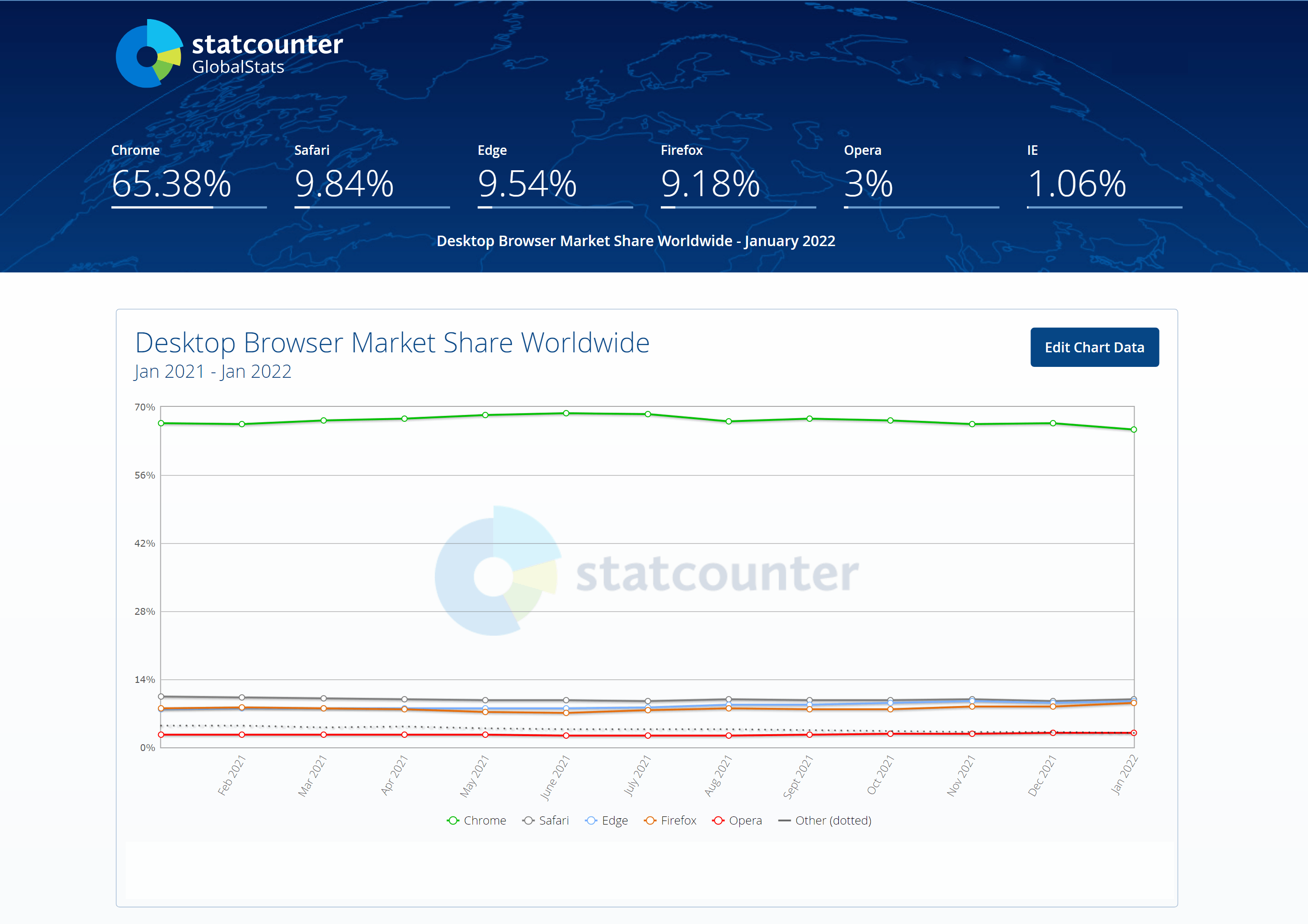19 years ago, on January 7, 2003, Apple introduced its own Web browser, named "Safari". This graphical web browser can be used on any Apple operating system. This led it to become the second most used web browser for desktops globally.
Google Chrome, which came out 5 years after Safari's release in 2003, is currently the most widely used and most popular web browser in the world.
However, a recent survey conducted by Statcounter, a web traffic analysis website, has revealed that Safari is about to face some tough competition coming from 2 of its rival browsers. Though Safari still holds the second position with 9.84% of users using it for desktop, Microsoft Edge, Microsoft’s own web browser, and Mozilla Firefox are right behind Safari with 9.54% and 9.18% of desktop users, respectively.
Google Chrome, on the other hand, has a commanding lead with over 65 percent of desktop users.
It is not like Microsoft Edge and Firefox are reaching up to Safari. Upon comparing user statistics based on January of the previous year and January of the current year, it is revealed that Safari came down from over 10% of users preferring it for desktop to 9.84% of users in 2022. If the users keep declining like this, then Safari might fall to either third place or fourth in just a few months.
In the United States, the web browser is still ahead of its competitive browser with a 6% lead against Microsoft Edge. However, as for Europe, Safari no longer holds the second rank. One major reason could be that Safari is only limited to macOSand can only be used on the desktop, whereas Edge and Firefox are not limited to Windows PCs but can also be used on Mac.
Another reason for this decline could be the new interface that was introduced for Safari. The unification of the tab and address bar wasn’t supported by Apple users, and they started to seek out new browsers. The company reverted to the new interface, but the damage was already done.
Despite offering more private and secure web browsing, users will keep shifting to new browsers unless Apple starts taking quick actions to keep this browser up to date.

Read next: New Study Reveals 86 Percent of Consumers Will Abandon Brands After Two Negative Experiences
Google Chrome, which came out 5 years after Safari's release in 2003, is currently the most widely used and most popular web browser in the world.
However, a recent survey conducted by Statcounter, a web traffic analysis website, has revealed that Safari is about to face some tough competition coming from 2 of its rival browsers. Though Safari still holds the second position with 9.84% of users using it for desktop, Microsoft Edge, Microsoft’s own web browser, and Mozilla Firefox are right behind Safari with 9.54% and 9.18% of desktop users, respectively.
Google Chrome, on the other hand, has a commanding lead with over 65 percent of desktop users.
It is not like Microsoft Edge and Firefox are reaching up to Safari. Upon comparing user statistics based on January of the previous year and January of the current year, it is revealed that Safari came down from over 10% of users preferring it for desktop to 9.84% of users in 2022. If the users keep declining like this, then Safari might fall to either third place or fourth in just a few months.
In the United States, the web browser is still ahead of its competitive browser with a 6% lead against Microsoft Edge. However, as for Europe, Safari no longer holds the second rank. One major reason could be that Safari is only limited to macOSand can only be used on the desktop, whereas Edge and Firefox are not limited to Windows PCs but can also be used on Mac.
Another reason for this decline could be the new interface that was introduced for Safari. The unification of the tab and address bar wasn’t supported by Apple users, and they started to seek out new browsers. The company reverted to the new interface, but the damage was already done.
Despite offering more private and secure web browsing, users will keep shifting to new browsers unless Apple starts taking quick actions to keep this browser up to date.

Read next: New Study Reveals 86 Percent of Consumers Will Abandon Brands After Two Negative Experiences
